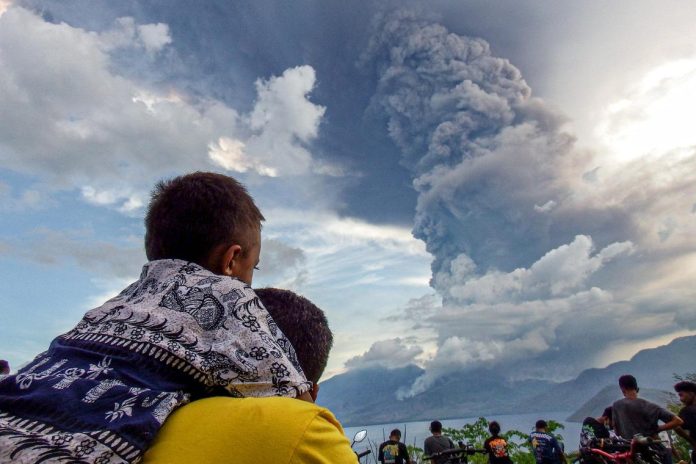Mount Lewotobi Laki-Laki, a highly active volcano in Indonesia, has erupted for the second day in a row. The eruption sent thick plumes of ash and volcanic material into the sky.
On Saturday morning, the volcano released a column of smoke that rose as high as 11 miles (18 kilometres). Ash and debris covered nearby villages, but no injuries or deaths have been reported. This eruption is among the most powerful since Mount Merapi’s major event in 2010.
A day earlier, on Friday, the volcano had already erupted. That blast sent ash up to 6.2 miles (10 kilometres) into the air and lit the sky with lava and volcanic lightning.
Authorities extend safety zone
Indonesia’s Geological Agency reported a surge of hot gas, rock, and lava travelling up to 3 miles (5 kilometres) down the slopes. Drone footage showed magma movement beneath the surface, triggering tremors that appeared on seismic monitors.
Volcanic debris, including thumb-sized gravel, landed as far as 5 miles (8 kilometres) from the crater. It covered towns and villages with thick ash. Officials have warned locals to remain alert, especially during heavy rain. Rainfall could lead to dangerous lava flows in rivers linked to the volcano.
Mount Lewotobi Laki-Laki stands at 5,197 feet (1,584 metres). It has been on the highest alert level since erupting in June. Due to rising activity, authorities have widened the exclusion zone to 4.3 miles (7 kilometres).
Region faces ongoing volcanic threats
This eruption comes shortly after a major one on 7 July disrupted travel in Bali. Ash from that event forced flight delays and cancellations at Ngurah Rai International Airport and covered surrounding roads and farmland.
Indonesia is home to more than 280 million people and has 120 active volcanoes. It sits on the Pacific “Ring of Fire,” a region prone to earthquakes and volcanic activity due to shifting tectonic plates.
